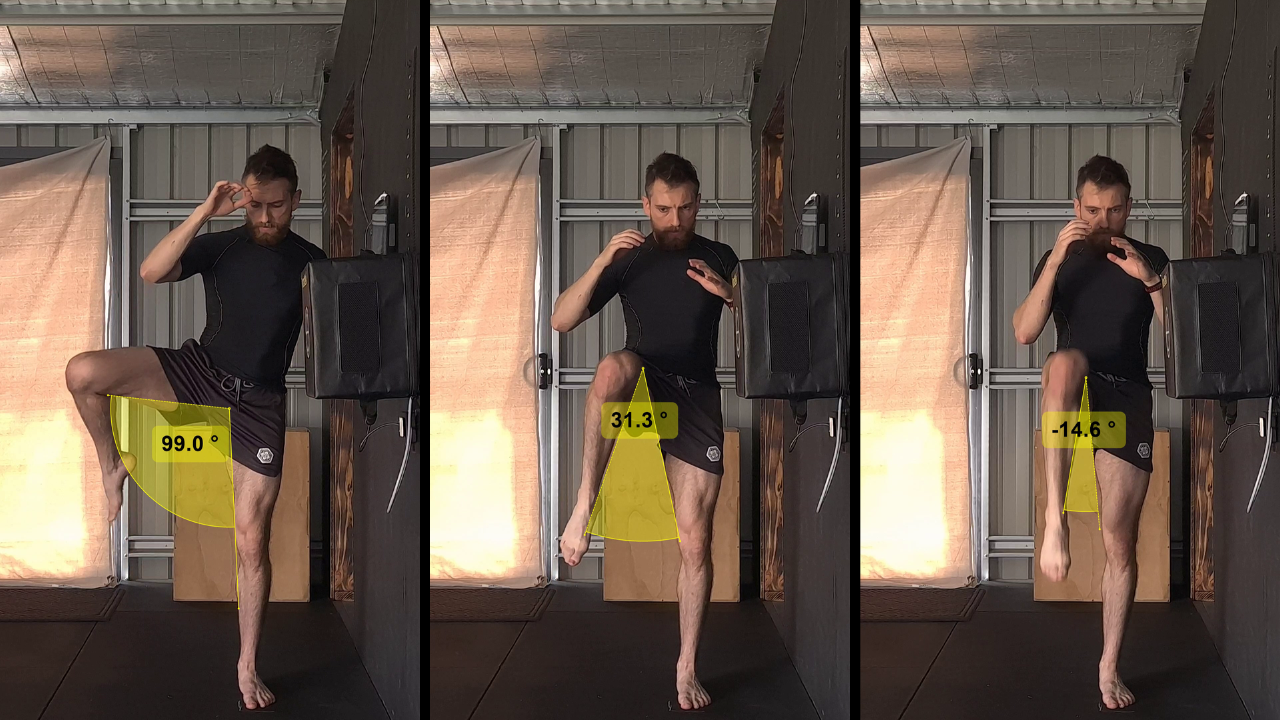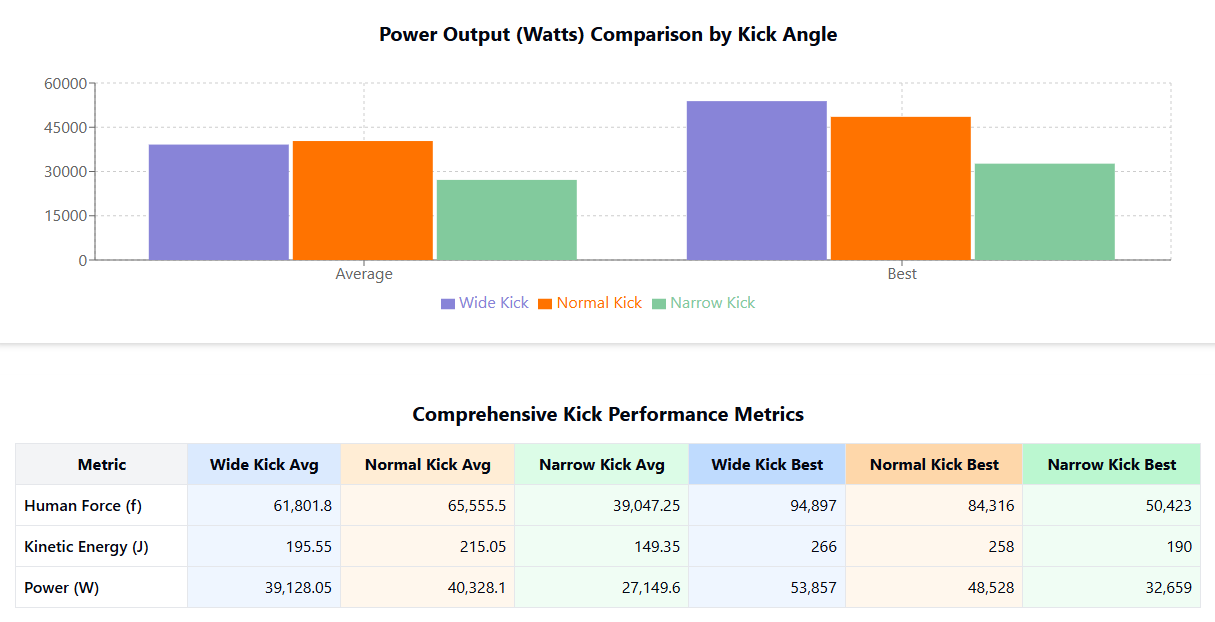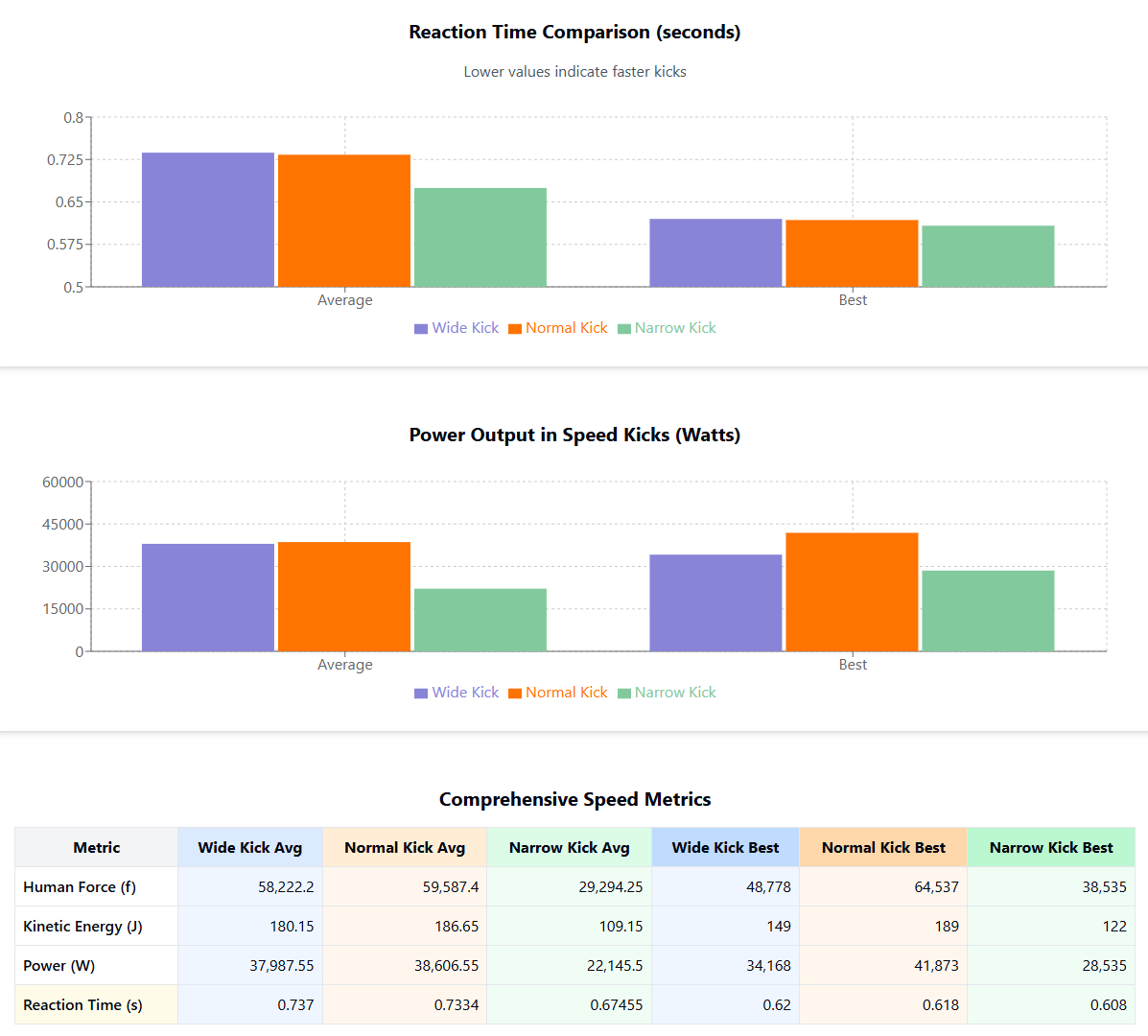The Science of the Roundhouse Kick: A Biomechanical Analysis of Three Angles
As both a martial artist and exercise scientist, I've always been fascinated by how small changes in technique can lead to dramatically different results. The roundhouse kick perfectly exemplifies this principle—same basic movement, but three distinct angles that could mean the difference between scoring a point and landing a knockout.
The Experiment
To quantify these differences, I conducted a systematic analysis of three roundhouse kick variations:
- Wide angle (chamber position above 90 degrees)
- Traditional angle (chamber position around 30 degrees)
- Narrow angle (chamber position around 15 degrees)

Methodology
All kicks were thrown with controlled variables:
- Same pivot foot position
- Consistent target height at 90cm from the floor (floating ribs, liver, and diaphragm area)
- PowerKube force measurement system for precise data collection
For each angle, I performed:
- 20 power kicks per angle (60 total)
- 20 speed kicks per angle (60 total)
- Multiple sets with varied order to eliminate fatigue as a factor
- Rest periods between sets to maintain performance quality
The testing measured four key metrics:
- Power in Watts from the Powerkube
- Speed in the form of reaction time from the Powerkube
- Deception (visibility and predictability)
- Knockout potential (practical application) taking into account power and deception
Breaking Down Each Angle
The Wide Angle Roundhouse
Mechanics
The wide roundhouse begins with a chamber position exceeding 90 degrees, followed by a horizontal striking motion. This wider arc creates more time and space for rotation, significantly increasing momentum generation.
Data Analysis
- Maximum Human Force: 94,897 franklins
- Peak Power: 53,957 watts
- Average Power: 39,128 watts (37% lower than peak)
- Average Reaction Time: 0.737 seconds
Strengths
- Highest peak force output of all three variations
- Exceptional knockout potential due to raw power
- Excellent for scenarios when maximum impact is required
Limitations
- Slowest delivery (0.737 seconds)
- Highly telegraphic motion (easily spotted by opponents)
- Least consistent force application
- Allows opponents 0.537 seconds to react after accounting for average human reaction time (0.200 seconds)
Practical Applications
This kick excels when:
- Your opponent is cornered or against ropes/cage
- Facing opponents who prefer to absorb strikes rather than evade
- Maximum stopping power is required
- You have created an opening for a power strike

The Narrow Angle Roundhouse
Mechanics
The narrow roundhouse features a nearly vertical chamber position (approximately 15 degrees), followed by a quick whipping motion. This minimizes telegraphing and maximizes speed.
Data Analysis
- Maximum Human Force: 50,423 franklins (47% less than wide angle)
- Peak Power: 32,659 watts
- Average Power: 27,149 watts
- Reaction Time: 0.674 seconds (fastest of the three)
Strengths
- Quickest delivery
- Highest deception rating
- Minimal space required for execution
- Difficult for opponents to read
Limitations
- Significantly lower power output
- Reduced knockout potential as a standalone technique
Practical Applications
This kick excels in:
- Point-fighting competitions where speed and scoring take priority over power
- Setting up combinations
- Creating openings for follow-up techniques
- Situations requiring quick strikes with minimal telegraphing
- Can be modified into question mark kicks and other advanced techniques

The Traditional Angle Roundhouse
Mechanics
The traditional roundhouse utilizes a moderate chamber position (approximately 30 degrees) with a diagonal cutting motion, balancing power generation and speed.
Data Analysis
- Maximum Force: 84,316 franklins (only 11% less than wide angle)
- Average Power: 40,328 watts (highest consistent output)
- Reaction Time: Comparable to the wide angle
Strengths
- Near-optimal power generation
- Highest average power (more consistent than wide angle)
- Moderate deception capability with the diagonal cutting motion
- Excellent balance of speed, power, and control
Limitations
- Less deceptive than the narrow angle
- Not as fast as the narrow variation
Practical Applications
This kick serves as the fundamental version that:
- Balances all critical performance factors
- Offers high knockout potential with better control than the wide angle
- Provides versatility across various combat scenarios
- Forms the foundation for developing other variations
Click the below link to view the roundhouse kick powerkube data.